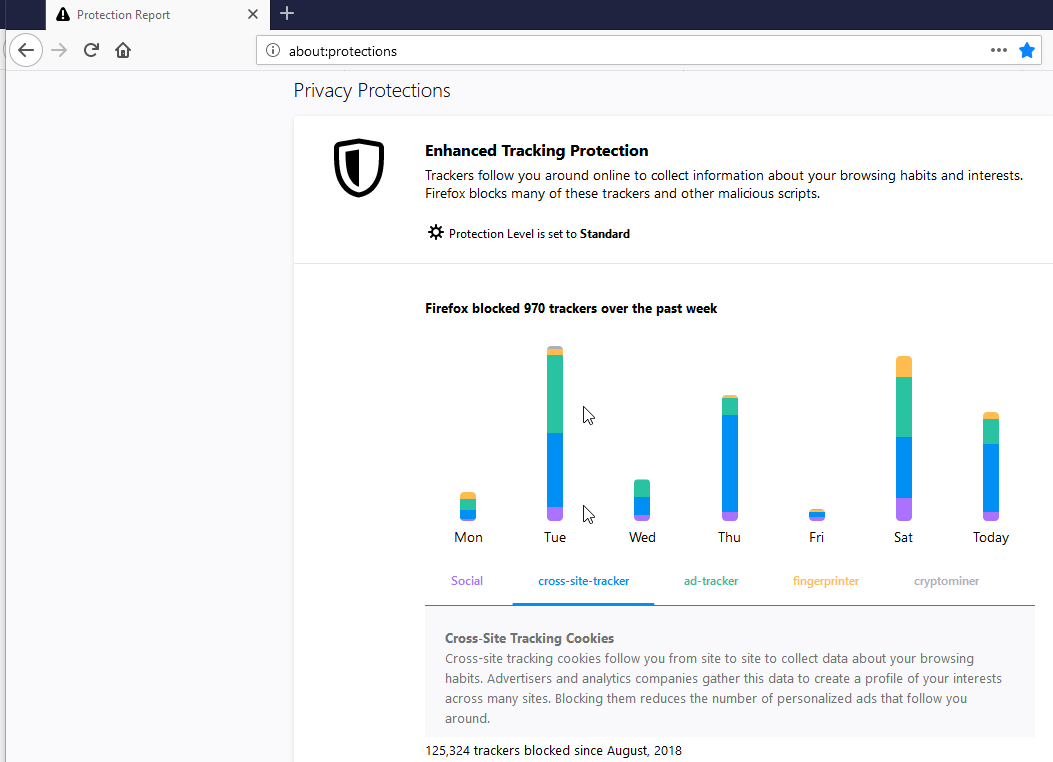Firefox’s Gonna Tattle On Trackers
A new feature called the “Tracking Protections Panel” or the “Protection Report”, is going to be included in Firefox. This Protection Report will tell users how many trackers Firefox blocked in the prior week, giving users like me a good idea of how these protections are working and how many sites that I visit track my surfing footprint.
The Protection Report will feature a graph showing users how many trackers the browser has blocked every day. It will break them down into their various types, for example: ad trackers, cross-site trackers, fingerprinters and cryptomining scripts.

Firefox protection report
The report should tell you how many times Firefox ran across a tracker that a social media site used to follow you across different third party websites and collected that data. The results should be incredible and also appalling for many who are not familiar with how much tracking sites perform. For many users, they do not understand how many websites they visit daily, including social media can continue to follow what you do on your browser. Because some sites include tracking in their TOS you may not even know or understand that you consented, or sometimes even if you didn’t consent.
The Protection Report feature isn’t out yet though. There’s only a mock up available on Nightly Build. If you want to have a gander at the mock up or read more about it, you should download Nightly Build of Firefox 69 9 (which is an in development version of the browser). Manually download Nightly Build and then type about:protections in your Firefox address bar.
This is basically more-so a reminder of what Firefox is doing to protect the user from online snoopers. It will also help us find the balance between privacy and functionality. Mozilla offered cross-site tracker blocking as an option in Firefox 63, released Oct 2018, but it took a while to turn it on by default. That’s in part because blocking trackers by default might hinder the functionality of some sites.
The Protection Report will hopefully help users measure their privacy and internet browsing experience and make the adjustments they want to create a more private and secure surfing experience. Although these reports are intended to help users see who is tracking them and for what type, it doesn’t help you stop the tracking those sites are doing.
For example if you visit Instagram often, they have ad trackers and other trackers that can watch you even if you left the site, there is no way to turn that off but you can opt out of it (although as we have seen before, that doesn’t do much and in fact it shows Instagram that you tried to stop the tracking).
What are your thoughts on the Protection Report, will it be useful to you?
Cheers
Areeb




